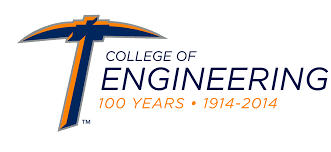Abstract
The research team will develop a Python-based and SQL-based modeling tool that links the two emissions models developed by Georgia Tech team (MOVES-Matrix and the FEC) with the USEPA’s preferred dispersion model (AERMOD). The inclusion of MOVES-Matrix and the FEC enables the tool to estimate emissions for both conventional vehicles (using MOVES-Matrix) and alternative fueled vehicles (using the FEC). The integration of emissions models and AERMOD model in the tool automated the data flow from traffic data (i.e., traffic volume, on-road operating conditions, and fleet composition) to emission rates, and then to near-road concentration predictions. In contrast to the direct use of AERMOD, which requires users to manually convert the unit of emission rates to the per unit area emission strength required by AERMOD, to identify the coordinates of polygon nodes that approximate the road geometric design, and to compile all those input data into the cumbersome AERMOD format, the tool will automate all these processes. For example, the tool will automatically convert the emissions rates from MOVES-Matrix and FEC and feed into AERMOD. The tool will also enable the users to either draw the road horizontal alignment on the interactive graph panel or uploading road nodes from a structured input table. The tool is also designed to enable the automatic (and smart) distribution of near-road receptors based on the road geometric characteristics, as recommended by the US EPA’s transportation conformity guidance. Such automated linkage will enhance the connectivity between emission rate models and dispersion models, and thus minimize data processing errors due to the complex procedures. Sensitivity analyses using this tool should also help to identify modeling uncertainties that may arise from the dynamic nature of traffic and the near-roadway atmospheric environment.
Research Investigators (PI*)
Haobing Liu*, Georgia Institute of Technology
Randall Guensler, Georgia Institute of Technology
Project Information
Start Date: April 15, 2020
End Date: March 31, 2021
Status: Active
Grant Number: 69A3551747128
Source Organization: CARTEEH UTC
Project Number: GT-03-30
RiP URL
UTC Project Information Form
CARTEEH Focus Area
Emissions & Energy Estimation
Policy & Decision Making
Data Integration
Sponsor
Office of the Assistant Secretary for Research and Technology
University Transportation Centers Program
Department of Transportation
Washington, DC 20590 United States
Performing Organization
Georgia Institute of Technology
School of Civil and Environmental Engineering
225 North Ave NW
Atlanta, GA 30332




